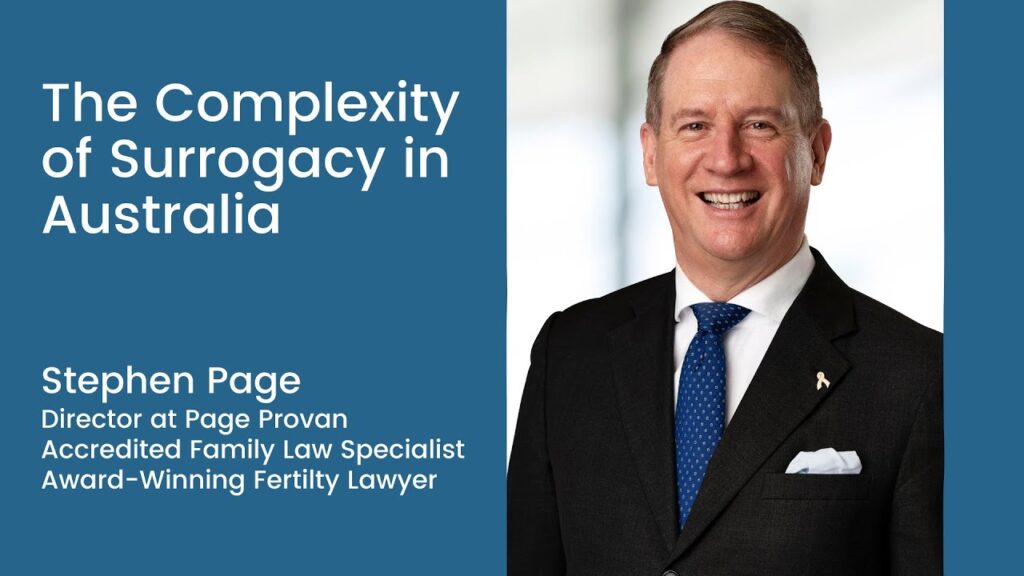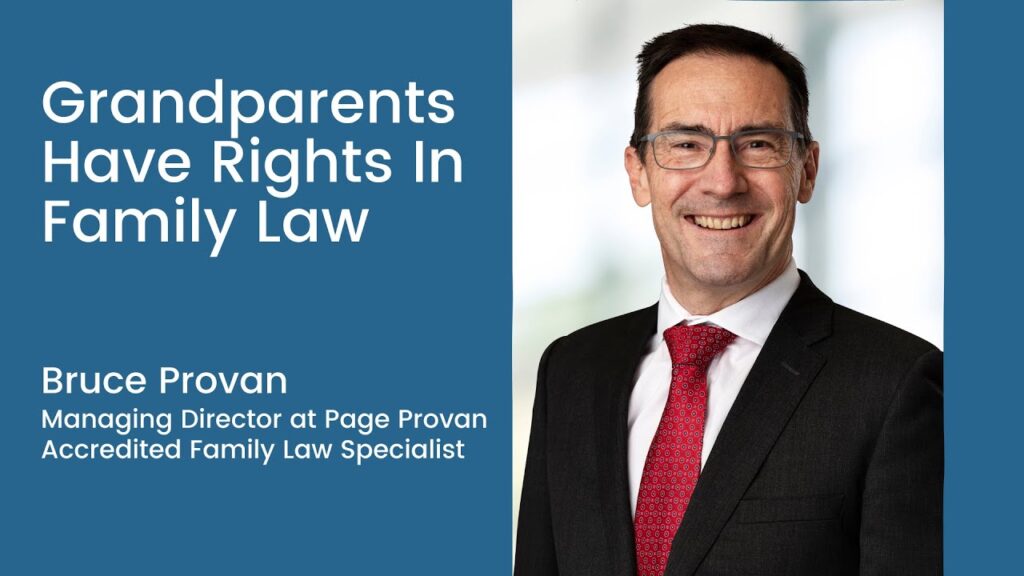Federal Magistrates Court- commenting on research about time with children, conflict between parents
In the recent Federal Magistrates Court case of Garvey and Eccles, Federal Magistrate Altobelli took into account research about the impact on children on both issues of time and conflict. His Honour noted that it was not evidence, but background material, but also hoped that parents might learn from it.
His Honour also found that there was not sufficeint evidence to justify a move by the mother from Sydney to Bathurst on the basis of her having multiple schlerosis. The mother argued that because she had MS, and stress aggravated or may have aggravated MS, and Bathurst was a less stressful place than Sydney, therefore she should be allowed to relocate.
His Honour’s comments on the research
His Honour stated:
Like many disputes relating to children, this is a dispute about dividing
the child’s time between the parents. A leading Australian researcher has
reflected on this phenomena in an article entitled “Time to rethink time? The
experience of time with children after divorce”[1][ Bruce Smyth, “Time to rethink time? The
experience of time with children after divorce” Family Matters No. 76, Winter
2005 page 4]
Smyth refers to the notion of time as part and parcel of the
‘custody wars’ between parents. He says about time at page 4: “…Parents fight
about it, courts divvy it up, and children long for it.” Smyth goes on to say
some important things about time at page 9 of the article:
A solid body of
data also suggest that it is the quality of relationships between parents, and
between parents and children, that exerts a critical influence on children’s
wellbeing, not the amount of time per se (Amato and Gilbreth 1999; Pryor and
Rodgers 2001). Of course, an emotionally close and warm relationship between
parents and children requires time to sustain it. “Quality time” needs time.According to Kelly and Lamb (2000), the greater the range of contexts
for interaction between parents and their children, the better. They suggest
that different contexts facilitate children’s social, emotional and cognitive
development, as well as afford greater opportunities for parents to build
emotional bonds with their children.It is the intermingling of different activities and the different
experiences of time that diverse contexts bring that form the hub of family
life, and which are critical for family wellbeing. For instance, overnight stays
allow for the experience of mundane everyday routines, as well as special
moments – such as putting children to bed, reading to them, saying good night,
and starting the day together over breakfast. Focused one-on-one together time
(such as playing a game, talking in the car, reading a book together, or helping
with homework) sends a clear signal to children that they matter. Outdoor time
(such as fishing, netball, or hiking) provides opportunities for children’s
emotional, physical, social and cognitive development, and give parents the
chance to mentor, and to remain engaged with, their children. Fun time (such as
long-weekends and school holidays) or special time (such as birthdays, Mothers’
or Fathers’ Day, and Christmas) foster the pursuit of mutually rewarding
experiences for children and parents, help create bonds between each and
symbolise those bonds, and can create positive life-long memories.But while these, and other, types of time are important for children’s
and parent’s wellbeing, one type of time warrants special attention:
being-in-the-moment time. This type of time involves unstructured, spontaneous,
intimate time where a parent and child are free to “hang out”, talk about
things, or engage in activities that are important to them (such as a teenage
daughter talking about boyfriend problems while her father peels potatoes).
Post-separation parenting arrangements that involve thin slices of parent–child
time, such as daytime-only contact each Saturday afternoon, work against the
experience of “being” time as this sort of time needs to feel natural and
unimpeded to create the conditions for free-flowing interpersonal
engagement.
This is a social science perspective on time, and its
significance in the context of children’s relationships with their parents. Section
65DAA(3) is the Family Law
Act’s attempt to incorporate this social science perspective into law. The
definition of substantial and significant time sets a high benchmark (“…only
if…”) for the very diverse forms of cumulative interaction between a parent
and child described in paragraphs (a), (b) and (c) of that section.Parental conflict and shared parenting
Some recent Australian research has urged
caution about shared parenting arrangements in families where there is a high
level of parental conflict. McIntosh J and Chisholm R in ‘Shared Care and
Children’s Best Interests in Conflicted Separation: A Cautionary Tale From
Current Research’ (2008) 20(1) Australian Family Lawyer 3 report high levels of
anxiety in children for families exhibiting certain characteristics. They
conclude as follows:
Neither the general conditions for children’s healthy
emotional development nor the specific new findings described above contradict
the core principle underpinning the new legislation, namely that most children
will benefit from having both parents actively and cooperatively involved in
their lives after separation. The data reported here suggest, however, that a
group of children are liable to slip through the safety net of considerations
designed to ensure that children do in fact benefit from shared parenting. The
findings sound a strong cautionary note about applying the new presumptions to
cases characterised by ongoing high conflict between parents. We have shown how,
in living between and within climates of ongoing dispute and emotional
pre-occupation, the mental health ‘benefits’ of substantially shared care
accrued by children are questionable.
By implication, then, the ‘safety net’
of considerations through which we filter the ‘best interests’ questions
attached to shared physical care needs to be more tightly woven. The task is to
sensibly guide ourselves through the socio-legal and often highly emotive
contexts that surround the issue, in order for developmentally appropriate
decisions can be made in each case.
The research outlined here suggests that
substantially shared care arrangements may entail risks for children’s healthy
emotional development in families that have the following specific factors,
especially in combination:[2] [ Whether a factor should be treated as a
contra-indication or a caution will be determined by severity, chronicity, and
the capacity for change. (endnote from article)]Parent factors:
Low levels of maturity and insight;
A parent’s poor
capacity for emotional availability to the child;
Ongoing, high levels
conflict;
Ongoing significant psychological acrimony between parents;
Child is seen to be at risk in the care of one parent.
Child factors:
Under 10 years of age;
The child is not happy with a shared arrangement;
The child experiences a parent to be poorly available to them.In keeping with the findings of Johnston et al (1989), the new Australian data
suggest that shared physical care is an arrangement best determined by the
capacity of parents to exercise maturity, to manage their conflict and to move
beyond egocentric decision-making in order to adequately embrace the changing
developmental needs of their children. When considering ‘the benefit to the
child of a meaningful relationship with both parents’, considerable weight
should be given to the need of the child for care and contact arrangements that
protect them from parental dynamics otherwise likely to erode their
developmental security. Here, the capacity of parents for ‘passive
cooperation’[3] [ Personal communication, Bruce Smyth, October
2007. (endnote from article)] and the containment of acrimony may prove
to be central benchmarks.This research is consistent with earlier research undertaken by
Johnston J “Children’s Adjustment in Sole Custody Compared to Joint Custody
Families and Principles for Custody Decision Making” (1995) 33 Family and
Conciliation Courts Review 415 at 420:
A small minority of divorcing parents remain in ongoing high conflict. This subgroup constitutes about 10% of all divorcing families (Maccoby & Mnookin, 1992). Ongoing high conflict is identified by multiple criteria, a combination of factors that tend to be, but are not always, associated with each other: intractable legal disputes, ongoing
disagreement over day-to-day parenting practices, expressed hostility, verbal
abuse, physical threats, and intermittent violence. Research findings to date
indicate that high-conflict divorced parents have a relatively poor prognosis
for developing cooperative co-parenting arrangements without a great deal of
therapeutic and legal intervention. Those parents who met the multiple criteria
of high conflict at the time of divorce were likely to remain conflicted over a
2-to 3-year period. At best, they became disengaged and non communicative with
one another; they were less likely to become more cooperative over this period
of time (Johnston, 1992; Maccoby & Mnookin, 1992).
The studies, as a group, consistently concluded that ongoing and unresolved conflict between divorced parents has detrimental effects on children, especially boys. Children are particularly hurt by witnessing physical violence between their parents
(Johnston, 1992). In divorced families where there was ongoing conflict between
parents, frequent visitation arrangements and joint custody schedules were
likely to result in increased levels of verbal and physical aggression between
parents, compared to similar families who had sole custody arrangements,
especially at the times of transitions when children moved between their
parents’ homes.Of even greater concern was the finding that more frequent
transitions and more shared access between high-conflict parents were associated
with more emotional and behavioural disturbance among children, especially
girls. These children were likely to be more depressed, withdrawn, and
aggressive, and to suffer from physical symptoms of stress (such as stomach
aches, headaches, etc.); they were also likely to have more problems getting
along with their peers, compared to children with fewer transitions and typical
sole custody access plans.[4] Ibid at 420.Johnston then provides a general principle to guide decision making in
high conflict families at 423:
… recognizing that highly conflictual
parents (as defined above) have a poor prognosis for becoming cooperative,
custody arrangements for this special subpopulation should allow parents to
disengage from each other and develop parallel and separate parenting
relationships with their children, governed by an explicit legal contract (a
parenting plan) that determines the access schedule. A clearly specified,
regular visitation plan is crucial, and the need for shared decision making and
direct communication should be kept to a minimum.This research is background material to my judgment. It is not
evidence. It is not material in respect of which I take judicial notice, and I
make no findings of fact as a result of this material. It is background
material, and it assists in understanding the expert evidence provided by the
Family Consultant. One also lives in hope that parents might learn from
it.












